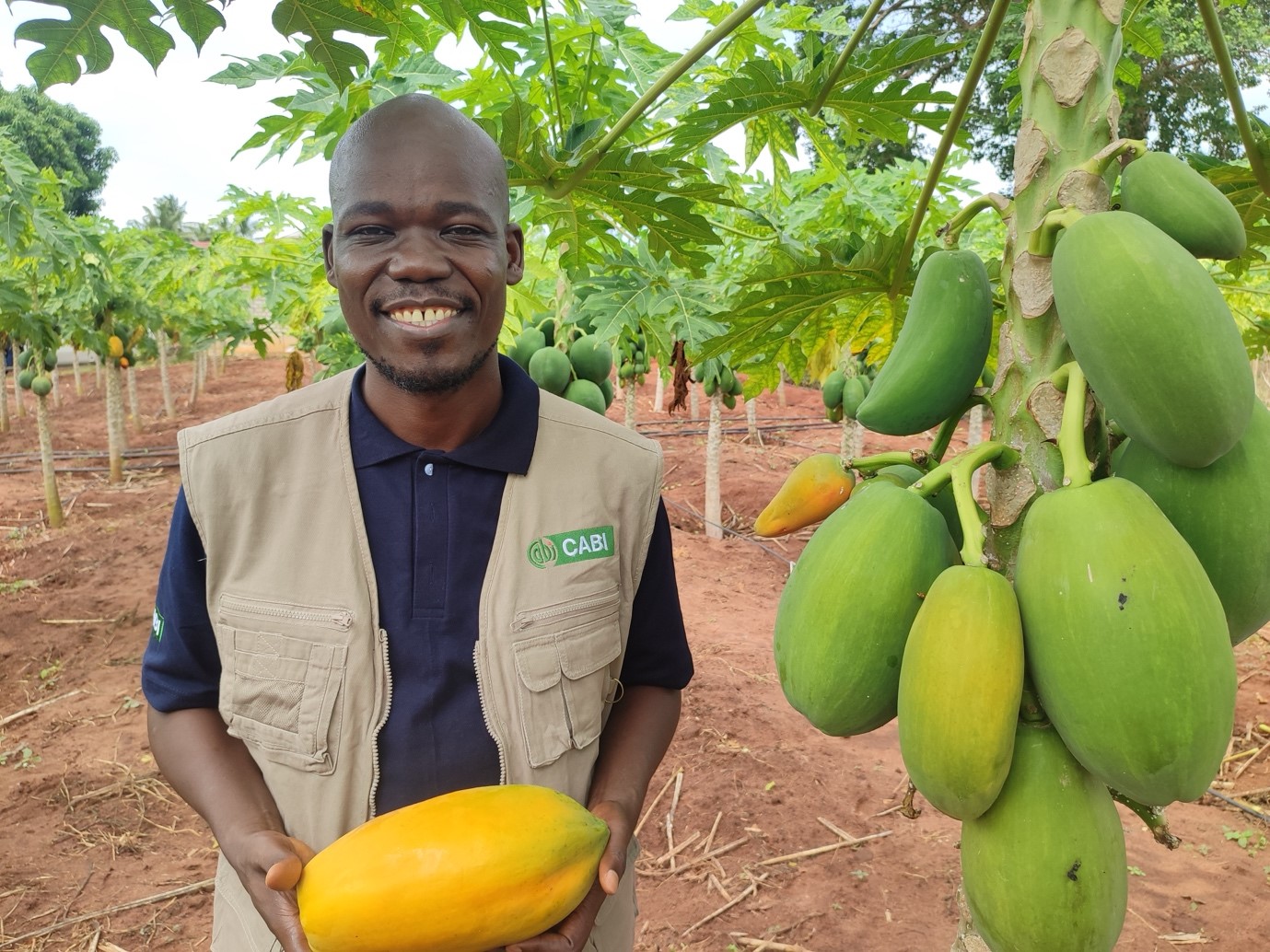NAIROBI, June 19, 2024 – Alfred Bolo is a father of two children, an agricultural officer by profession, and a practising farmer in Kwale County, Kenya. He grows over 400 pawpaw [papaya] trees on his farm. Every week, Alfred harvests up to 400 kgs of papaw fruit, earning him an income of approximately Ksh. 22,000 [Ush 880,000] per week.
His biggest market is the chain of local holiday resorts and hotels. Bolo also supplies to a network of 10 aggregators, mainly made up of women who own stalls in the booming fruit market in Kenya’s second-largest city, Mombasa.
“My papaya is very popular because I do not use pesticides, making it safer for my consumers; plus, the variety I grow is very sweet, making it popular with my customers,” said Bolo.
From his proceeds, Bolo has been able to supplement his income to pay for his children’s fees and meet some of the household utility expenses. The surplus is being invested in an upcoming cage fish farming venture in Kisumu County.
Protecting Bolo’s pawpaw from papaya mealybug
His farm has his homestead in one corner, with rows of papaya trees lining the path into his compound. Hidden towards one edge of the farm, under the pawpaw trees, is a Natural Enemies Field Reservoir [NEFR].
This is where Bolo has successfully reared a tiny wasp [Acerophagus papaya] that has proved its effectiveness in managing the invasive papaya mealybug. These parasitic wasps—natural enemies of the papaya mealybug—feed on the pest, killing it.
While giving a tour of his farm, Bolo recalled his farming journey, “The papaya mealybug was a big hindrance when I started planting my fruits, affecting my harvests and ultimately killing my trees.
Approximately eight months ago, I underwent training on how to set up my NEFR structure, and I can attest to its effectiveness in managing this pest. I have seen the pest populations reduce significantly and I have benefited from huge cost savings that would have been brought by using additional inputs like pesticides.
These wasps are now my army of soldiers fighting to protect my pawpaw.”
Sustainable pest management
Alfred is one of the many farmers benefiting from the use of biological control methods to manage the papaya mealybug [Paracoccus marginatus] in East Africa.
Under this initiative, CABI is working with the Kenya Agricultural and Livestock Research Organization [KALRO], Kenya Plant Health Inspectorate Service [KEPHIS], The National Museums of Kenya [NMK], and The National Agricultural Research Organization [NARO].
Others are the University of Juba [UoJ] with the support of Darwin Initiative to provide solutions for sustainable management of papaya mealybug in Kenya, South Sudan and Uganda through the release of A.papayae as part of Integrated Pest Management.
This includes increasing awareness and strengthening the capacity of farmers, extension officers, researchers, input suppliers and policymakers to manage the pest.
This partnership is also training and helping more farmers like Alfred to establish NEFRs in their fields. The NEFRs act as a natural home for A papayae within farmers’ fields and help conserve the parasitoids in communities beyond the project timeline.
Source: CABI
Buy your copy of thecooperator magazine from one of our country-wide vending points or an e-copy on emag.thecooperator.news
